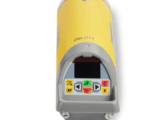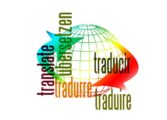Startup Stockholm: The Emerging Hub of Innovation and Entrepreneurship

Introduction:
Stockholm has gained significant recognition as a thriving hub for startups in recent years. With its vibrant ecosystem, supportive infrastructure, and access to talent and capital, the city has become a hotbed of innovation and entrepreneurship. In this article, we will provide an in-depth overview of Startup Stockholm, exploring its various aspects, the types of startups present, and the quantitative measurements of its growth. Additionally, we will discuss how different startups in Stockholm differ from each other and provide a historical analysis of the advantages and disadvantages they have experienced.
Understanding Startup Stockholm

Startup Stockholm, as the name suggests, refers to the collective ecosystem and community of startups operating in the city. It encompasses a wide range of industries and sectors, including technology, fintech, biotech, fashion, and more. The city’s entrepreneurial spirit and supportive environment have attracted numerous entrepreneurs and investors, fostering collaboration, networking, and innovation.
Types and Popularity of Startups in Stockholm
Stockholm boasts a diverse range of startups, varying in size, scope, and focus. Some of the popular types of startups in the city include:
1. Tech startups: Stockholm is known for its thriving tech scene, with startups leveraging emerging technologies such as artificial intelligence, machine learning, and blockchain to develop innovative solutions. The city has witnessed the rise of successful tech startups like Spotify, Klarna, and iZettle.
2. Fintech startups: Stockholm’s financial technology sector has experienced exponential growth, with startups revolutionizing traditional banking and payment systems. Companies like Trustly, Tink, and Qapital have gained international recognition for their cutting-edge solutions.
3. Sustainability startups: In recent years, Stockholm has witnessed a surge in startups dedicated to promoting sustainable practices and addressing environmental challenges. These startups focus on areas such as renewable energy, recycling, and sustainable transportation. Examples include Northvolt, Karma, and Einride.
4. Biotech and healthcare startups: Stockholm boasts a vibrant biotech ecosystem, with startups working on innovative medical treatments, drug development, and healthcare technologies. Companies like BioArctic, Cellink, and OnDosis are at the forefront of the biotech revolution in Stockholm.
Quantitative Measurements of Startup Stockholm
When it comes to measuring the success and growth of startups in Stockholm, several key metrics are considered.
1. Funding: Stockholm has seen a significant inflow of venture capital funding, indicating investor confidence in the local startup ecosystem. In 2020, Stockholm-based startups raised over $2.3 billion in funding, an increase of 19% compared to the previous year.
2. Employment: The growth of startups in Stockholm has contributed to job creation. According to a report by Stockholm Business Region, the number of individuals employed in the city’s startup ecosystem reached approximately 60,000 in 2020, demonstrating the significant impact on the local economy.
3. Exits and acquisitions: Stockholm has witnessed several successful exits and acquisitions, where startups are acquired by larger companies or go public through initial public offerings (IPOs). Notable examples include the acquisition of iZettle by PayPal and the IPOs of Spotify and Truecaller.
Distinguishing Factors among Startup Stockholm
While there are various startups in Stockholm, each possesses unique characteristics that set them apart. Some distinguishing factors include:
1. Industry focus: Startups in Stockholm cover a wide range of industries, enabling cross-pollination and collaboration. This diversity fosters innovation and creates opportunities for niche expertise.
2. Internationalization: Stockholm’s startups have a global outlook from inception, aiming to capture international markets from the start. This mindset provides a competitive edge and positions them for growth on a global scale.
3. Supportive infrastructure: Stockholm offers a supportive ecosystem for startups, providing access to co-working spaces, incubators, accelerators, and mentorship programs. This infrastructure nurtures startups from their early stages and helps them navigate the challenges of scaling.
Historical Analysis of Advantages and Disadvantages
Over the years, Stockholm’s startup scene has experienced both advantages and disadvantages that have shaped its growth.
Advantages:
1. Access to talent: Stockholm boasts a highly skilled and educated workforce, with top-ranking universities producing a steady stream of talent. This availability of skilled professionals strengthens startups’ ability to develop innovative solutions.
2. Strong government support: The Swedish government has implemented policies and initiatives to foster innovation and entrepreneurship. This support includes tax incentives, grants, and favorable regulations, creating an enabling environment for startups.
Disadvantages:
1. High cost of living: Stockholm’s high cost of living can pose a challenge for startups, especially in terms of attracting and retaining talent. The cost of office space and living expenses can put pressure on young companies with limited resources.
2. Limited access to capital: Although the funding landscape has improved significantly, access to capital remains a challenge for startups in the early stages. Raising funds can be difficult, particularly for startups outside the tech sector.
Conclusion:
Startup Stockholm has emerged as an exciting hub for innovation and entrepreneurship, attracting startups from various industries. With its supportive ecosystem, access to talent and capital, and global mindset, Stockholm continues to play a leading role in the startup landscape. As the city evolves and adapts to new challenges, startups in Stockholm are poised to drive economic growth, shape industries, and make a lasting impact on the global stage.
















































